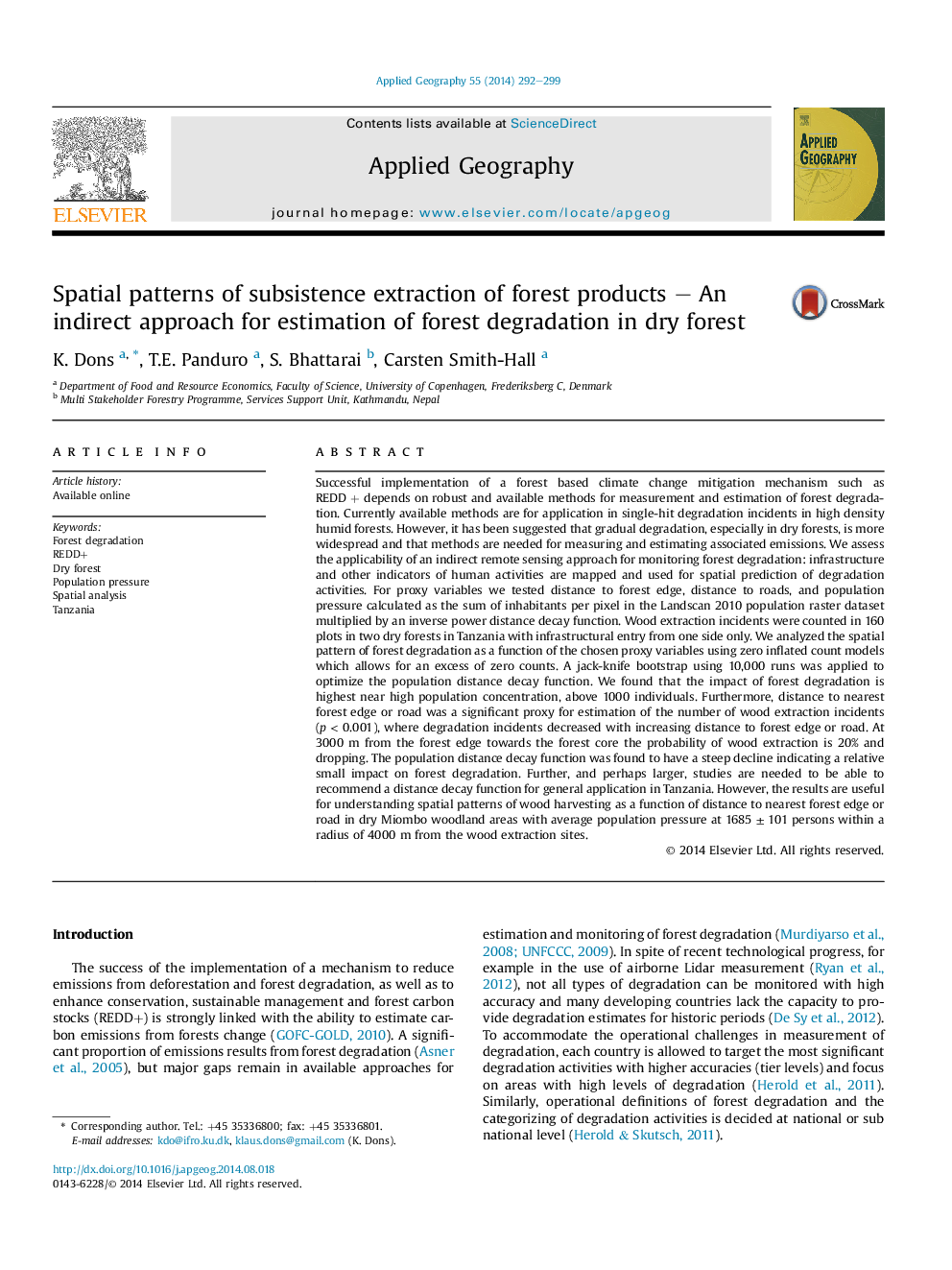| کد مقاله | کد نشریه | سال انتشار | مقاله انگلیسی | نسخه تمام متن |
|---|---|---|---|---|
| 6538690 | 158707 | 2014 | 8 صفحه PDF | دانلود رایگان |
عنوان انگلیسی مقاله ISI
Spatial patterns of subsistence extraction of forest products - An indirect approach for estimation of forest degradation in dry forest
ترجمه فارسی عنوان
الگوهای فضایی استخراج معیشت محصولات جنگلی - رویکرد غیرمستقیم برای برآورد تخریب جنگل در جنگل های خشک
دانلود مقاله + سفارش ترجمه
دانلود مقاله ISI انگلیسی
رایگان برای ایرانیان
کلمات کلیدی
موضوعات مرتبط
علوم زیستی و بیوفناوری
علوم کشاورزی و بیولوژیک
جنگلداری
چکیده انگلیسی
Successful implementation of a forest based climate change mitigation mechanism such as REDD + depends on robust and available methods for measurement and estimation of forest degradation. Currently available methods are for application in single-hit degradation incidents in high density humid forests. However, it has been suggested that gradual degradation, especially in dry forests, is more widespread and that methods are needed for measuring and estimating associated emissions. We assess the applicability of an indirect remote sensing approach for monitoring forest degradation: infrastructure and other indicators of human activities are mapped and used for spatial prediction of degradation activities. For proxy variables we tested distance to forest edge, distance to roads, and population pressure calculated as the sum of inhabitants per pixel in the Landscan 2010 population raster dataset multiplied by an inverse power distance decay function. Wood extraction incidents were counted in 160 plots in two dry forests in Tanzania with infrastructural entry from one side only. We analyzed the spatial pattern of forest degradation as a function of the chosen proxy variables using zero inflated count models which allows for an excess of zero counts. A jack-knife bootstrap using 10,000 runs was applied to optimize the population distance decay function. We found that the impact of forest degradation is highest near high population concentration, above 1000 individuals. Furthermore, distance to nearest forest edge or road was a significant proxy for estimation of the number of wood extraction incidents (p < 0.001), where degradation incidents decreased with increasing distance to forest edge or road. At 3000 m from the forest edge towards the forest core the probability of wood extraction is 20% and dropping. The population distance decay function was found to have a steep decline indicating a relative small impact on forest degradation. Further, and perhaps larger, studies are needed to be able to recommend a distance decay function for general application in Tanzania. However, the results are useful for understanding spatial patterns of wood harvesting as a function of distance to nearest forest edge or road in dry Miombo woodland areas with average population pressure at 1685 ± 101 persons within a radius of 4000 m from the wood extraction sites.
ناشر
Database: Elsevier - ScienceDirect (ساینس دایرکت)
Journal: Applied Geography - Volume 55, December 2014, Pages 292-299
Journal: Applied Geography - Volume 55, December 2014, Pages 292-299
نویسندگان
K. Dons, T.E. Panduro, S. Bhattarai, Carsten Smith-Hall,
